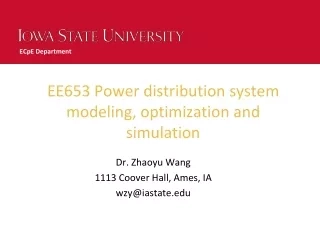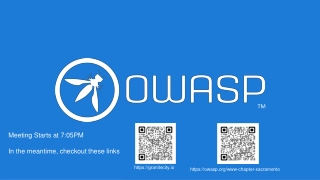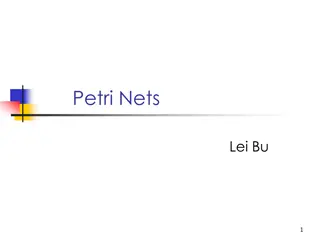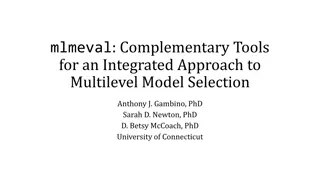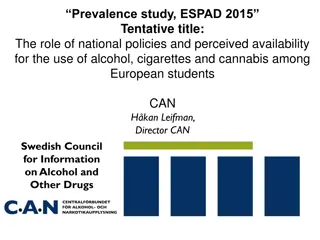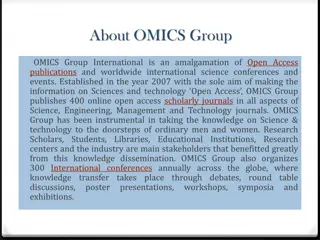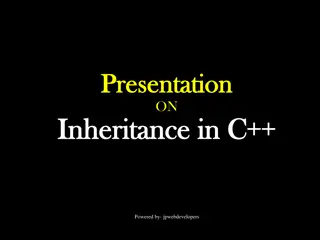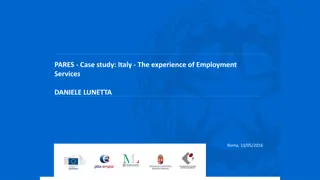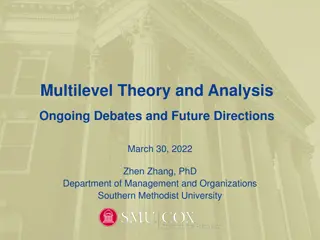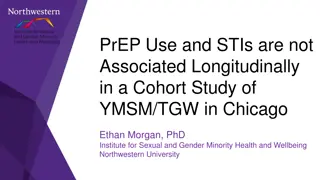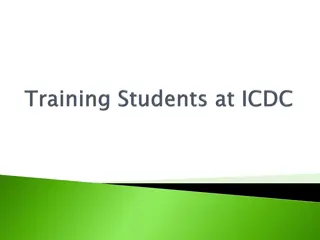Modeling and Optimization of Power Distribution System
This presentation explores the modeling, optimization, and simulation techniques for power distribution systems. Topics covered include load definitions, demand factors, utilization factors, and load diversity. Examples and case studies are provided to illustrate these concepts. The content is based
23 views • 48 slides
Modern Threat Modeling & Cloud Systems in OWASP Sacramento
Explore modern threat modeling techniques for cloud systems at OWASP Sacramento's June 2023 event. Agenda includes community topics and more. Membership at Granite City offers workspace perks and access to exclusive events. Learn about threat modeling history and methodologies like STRIDE and PASTA.
1 views • 14 slides
Understanding Petri Nets: A Versatile Tool for Modeling Systems
Petri nets are a powerful modeling tool characterized by their asynchronous state transitions, making them ideal for representing concurrent and distributed systems. Originating from Carl Adam Petri's work in the 1960s, Petri nets have found diverse applications in fields such as computer science an
1 views • 84 slides
Overview of Army Modeling and Simulation Office
The U.S. Army Modeling and Simulation Office (AMSO) serves as the lead activity in developing strategy and policy for the Army Modeling and Simulation Enterprise. It focuses on effective governance, resource management, coordination across various community areas, and training the Army Analysis, Mod
1 views • 8 slides
Capacity Zone Modeling for Forward Capacity Auction 17 Results
This presentation unveils the Capacity Zone modeling calculations for Forward Capacity Auction 17 associated with the 2026-2027 Capacity Commitment Period by ISO-NE PUBLIC. It delves into boundary definitions, import-constrained zone modeling, and market rules guiding the assessments and modeling pr
0 views • 16 slides
A Comprehensive Guide to Multilevel Model Selection
Explore mlmeval as a postestimation tool for assessing multilevel model fit and adequacy. Learn about R2 measures, Rights & Sterba's framework, and two-level linear mixed models illustrated with examples and code snippets.
0 views • 30 slides
Distribution Feeder Modeling and Analysis Overview
This document delves into the modeling, optimization, and simulation of power distribution systems, specifically focusing on Distribution Feeder Modeling and Analysis. It covers the components of a typical distribution feeder, series components, Wye-Connected Voltage Regulator modeling, and equation
0 views • 14 slides
Understanding Data Modeling vs Object Modeling
Data modeling involves exploring data-oriented structures, identifying entity types, and assigning attributes similar to class modeling in object-oriented development. Object models should not be solely based on existing data schemas due to impedance mismatches between object and relational paradigm
0 views • 17 slides
Evolution of Modeling Methodologies in Telecommunication Standards
Workshop on joint efforts between IEEE 802 and ITU-T Study Group 15 focused on information modeling, data modeling, and system control in the realm of transport systems and equipment. The mandate covers technology architecture, function management, and modeling methodologies like UML to YANG generat
1 views • 16 slides
Understanding Geometric Modeling in CAD
Geometric modeling in computer-aided design (CAD) is crucially done in three key ways: wireframe modeling, surface modeling, and solid modeling. Wireframe modeling represents objects by their edges, whereas surface modeling uses surfaces, vertices, and edges to construct components like a box. Each
1 views • 37 slides
Mathematical Modeling and Error Analysis in Engineering
Mathematical modeling plays a crucial role in solving engineering problems efficiently. Numerical methods are powerful tools essential for problem-solving and learning. This chapter explores the importance of studying numerical methods, the concept of mathematical modeling, and the evaluation proces
0 views • 10 slides
Megapay Compensation Plan Overview
Megapay offers a lucrative compensation plan based on product quality, direct earnings, bonuses, multilevel commissions, and more. Distributors can earn unlimited sponsorship commissions, weekly bonuses, and bonuses to 15th generation without sales targets or pressure. Two types of team building - B
0 views • 18 slides
Introduction to Dynamic Structural Equation Modeling for Intensive Longitudinal Data
Dynamic Structural Equation Modeling (DSEM) is a powerful analytical tool used to analyze intensive longitudinal data, combining multilevel modeling, time series modeling, structural equation modeling, and time-varying effects modeling. By modeling correlations and changes over time at both individu
0 views • 22 slides
System Modeling and Simulation Overview
This content provides insights into CPSC 531: System Modeling and Simulation course, covering topics such as performance evaluation, simulation modeling, and terminology in system modeling. It emphasizes the importance of developing simulation programs, advantages of simulation, and key concepts lik
0 views • 28 slides
Understanding Object Modeling in Software Development
Object modeling is a crucial concept in software development, capturing the static structure of a system by depicting objects, their relationships, attributes, and operations. This modeling method aids in demonstrating systems to stakeholders and promotes a deeper understanding of real-world entitie
1 views • 65 slides
Signal Encoding Techniques in Networks and Communication
This chapter delves into signal encoding techniques used in digital data transmission, covering key concepts such as encoding schemes like NRZ-L and NRZI, multilevel binary encoding, and biphase encoding. It explores the fundamentals of digital signaling, modulation techniques, and the relationship
3 views • 34 slides
Coupled Ocean-Atmosphere Modeling on Icosahedral Grids
Coupled ocean-atmosphere modeling on horizontally icosahedral and vertically hybrid-isentropic/isopycnic grids is a cutting-edge approach to modeling climate variability. The design goals aim to achieve a global domain with no grid mismatch at the ocean-atmosphere interface, with key indicators such
1 views • 21 slides
Understanding Logistic Regression in Multi-level Hierarchies
Explore the intricacies of logistic regression in cross-level hierarchies through helpful project advice, model graphs, and leftover considerations. Learn about transforming binary responses, interpreting log-odds, and conducting multilevel logistic regression with random intercepts. Dive into real-
0 views • 21 slides
Fire and Smoke Modeling Evaluation Effort (FASMEE) Overview
FASMEE is a collaborative project aimed at assessing and advancing fire and smoke modeling systems through critical measurement techniques and observational data. Led by key technical leads, FASMEE focuses on diverse modeling areas such as fire growth, effects, coupled fire-atmosphere behavior, smok
5 views • 30 slides
The Role of National Policies in Adolescent Substance Use
This study focuses on the impact of national policies and perceived availability on alcohol, cigarette, and cannabis use among European students. Despite declining trends in alcohol and smoking, these substances remain prevalent among young people, causing harm. By examining availability and prices
0 views • 13 slides
Subarea and Highway Corridor Studies: Travel Demand Modeling and Refinements
In this lesson, we delve into subarea and corridor studies focusing on travel demand model refinements, highway network coding, corridor congestion relief, and trip assignment theory. Subarea modeling plays a crucial role in forecasting travel within smaller regions with detailed traffic patterns, t
1 views • 45 slides
Essential Steps for Setting up a Modeling Study
Ensure clarity on modeling goals and uncertainties. Select sample areas strategically based on interest and available data. Determine appropriate resolution for modeling. Define variables to model and validate the model effectively. Assess sample data adequacy and predictor variables availability. E
0 views • 9 slides
Water Storage Tanks Hydraulic Modeling and Water Quality Considerations
This presentation by Justine Carroll, P.E., Project Manager, focuses on the hydraulic modeling and water quality considerations related to water storage tanks. It covers topics such as water age evaluation, steady state modeling, extended period simulations, pump controls, demand patterns, EPS verif
0 views • 34 slides
Advancing Computational Modeling for National Security and Climate Missions
Irina Tezaur leads the Quantitative Modeling & Analysis Department, focusing on computational modeling and simulation of complex multi-scale, multi-physics problems. Her work benefits DOE nuclear weapons, national security, and climate missions. By employing innovative techniques like model order re
0 views • 6 slides
Flexible Framework for Stormwater Lids Modeling
A new flexible framework for forward and inverse modeling of stormwater lids is presented. It includes governing equations, hydraulic and contaminant transport, numerical methods, and demonstration cases for various green infrastructure components. The importance of different processes in modeling i
0 views • 20 slides
Understanding Cross-Classified Models in Multilevel Modelling
Cross-classified models in multilevel modelling involve non-hierarchical data structures where entities are classified within multiple categories. These models extend traditional nested multilevel models by accounting for complex relationships among data levels. Professor William Browne from the Uni
0 views • 13 slides
Sustainability and Organic Livestock Modeling for Global Food Security
The research presented at the 18th Organic World Congress in Istanbul delves into the Sustainability and Organic Livestock (SOL-m) modeling approach developed by FAO and FiBL. The study aims to explore the potential impacts of global conversion to organic livestock production by 2050 on food securit
0 views • 25 slides
OMICS Group: Revolutionizing Science and Technology Dissemination
OMICS Group International, established in 2007, is a leading amalgamation of open-access publications and global scientific conferences. With a commitment to making science and technology information freely accessible, OMICS Group publishes 400 online scholarly journals covering various fields. The
0 views • 17 slides
Understanding Automated Speech Recognition Technologies
Explore the world of Automated Speech Recognition (ASR), including setup, basics, observations, preprocessing, language modeling, acoustic modeling, and Hidden Markov Models. Learn about the process of converting speech signals into transcriptions, the importance of language modeling in ASR accuracy
0 views • 28 slides
Update on Modeling and Coordination Discussions
Weekly coordination calls with Ramboll and discussions with EPA OAQPS leads focused on Regional Haze and modeling adjustments. Final draft of procedures document with visibility projections and glide slope adjustments. Upcoming RTOWG meetings covering methodology, projections, and modeling evaluatio
0 views • 5 slides
Importance of Data Modeling in Industrial Information Systems
Introduction to data modeling and design in Industrial Information Systems at King Saud University College of Engineering. The chapter covers the significance of data modeling, capturing data characteristics, structural information, and the role of databases and DBMS. Data modeling fills crucial gap
0 views • 51 slides
Mega-Modeling for Big Data Analytics
Mega-Modeling is a comprehensive approach that encompasses model construction, evaluation, composition, evolution, and search to address challenges in various areas such as social and economic resilience, health, transportation, and energy management. The pillars of Mega-Modeling include Model-Drive
0 views • 14 slides
Understanding Inheritance in C++ Programming
Inheritance in C++ allows a class to inherit properties and characteristics from another class, forming a hierarchy of classes. Different types of inheritance include Single, Multiple, Multilevel, Hierarchical, and Hybrid Inheritance. Each type has its own unique way of deriving classes from existin
1 views • 9 slides
NetLogo - Programmable Modeling Environment for Simulating Natural and Social Phenomena
NetLogo is a powerful and versatile programmable modeling environment created by Uri Wilensky in 1999. It allows users to simulate natural and social phenomena by giving instructions to multiple agents operating independently, making it ideal for modeling complex systems evolving over time. NetLogo
0 views • 7 slides
Transforming Italy's Employment Services: A Case Study
Italy has implemented multilevel governance and institutional transitions to enhance Employment Services, focusing on the Youth Guarantee. The short-term initiatives include creating a national agency for ALMPs and restructuring services, while long-term changes involve constitutional reforms. Regio
0 views • 7 slides
Exploring Multilevel Theory and Analysis: Ongoing Debates and Future Directions
Delve into the world of multilevel modeling with insights on disciplines, key debates, and ongoing discussions. Discover the nuances between B and W variances, top-down effects, and more, offering a comprehensive view of this complex analytical approach. Unravel traditional and contemporary perspect
0 views • 19 slides
Local Government Structure in Italy: A Comprehensive Overview
The system of multilevel government in Italy is composed of regions, provinces, and communes, forming a regional state with 107 provinces and 7,904 municipalities. The governance structure includes direct elections for regional councils, executive committees, presidents, and mayors at different leve
1 views • 5 slides
Reservoir Modeling Using Gaussian Mixture Models
In the field of reservoir modeling, Gaussian mixture models offer a powerful approach to estimating rock properties such as porosity, sand/clay content, and saturations using seismic data. This analytical solution of the Bayesian linear inverse problem provides insights into modeling reservoir prope
0 views • 10 slides
PrEP Use and STIs Association Study Among YMSM/TGW in Chicago
A longitudinal cohort study by Ethan Morgan, Ph.D., examined the link between Pre-Exposure Prophylaxis (PrEP) use and rectal Sexually Transmitted Infections (STIs) among young men who have sex with men and transgender women in Chicago. The study found no significant relationship between PrEP use and
0 views • 6 slides
Effective Training Tips for DECA Student Competitions
Offering multilevel qualifications and valuable insights, this guide provides tips for trainers preparing students for DECA competitions. Emphasizing preparation, individualized guidance, and leveraging resources like Turnitin, it aims to enhance students' presentation skills and performance in the
0 views • 16 slides
